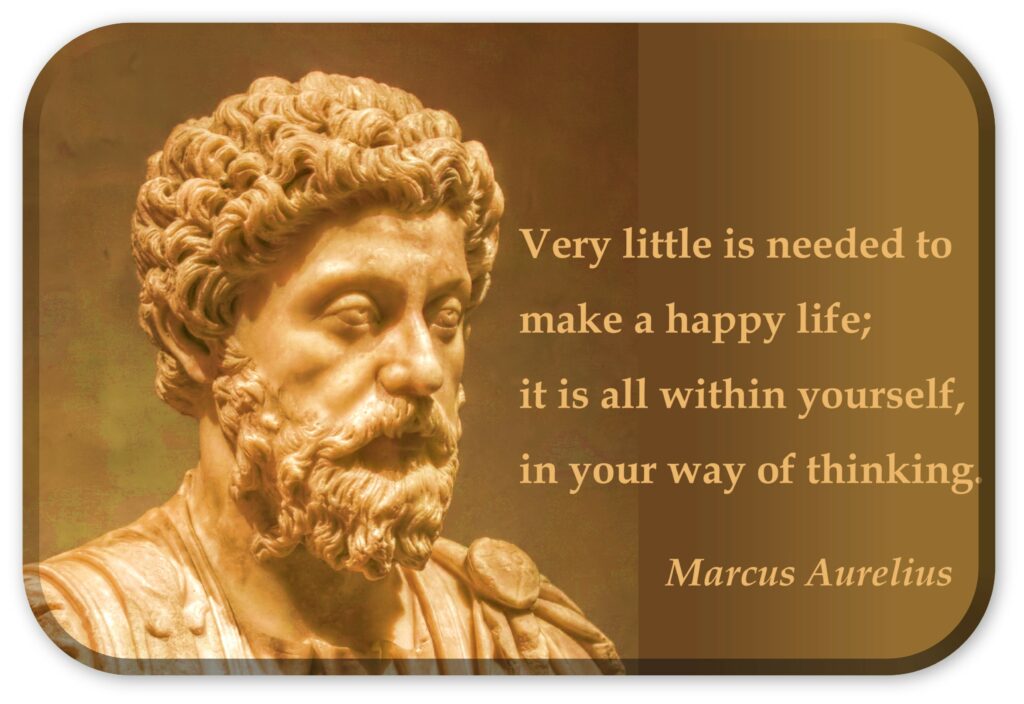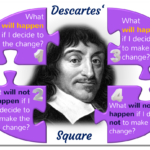
Do you want results? Create them yourself!
Business Coaching
To solve problems, get the results you want, or simply gain new insights, it’s always handy to have simple tools that:
1. you can easily remember and,
2. are very logical and effective.
Our favorite is the so-called CTFAR model, which basically goes back to stoicism. We have used it for numerous situations or problems and it really works, which is why we want to share it with you, our dear visitors and followers.
What does CTFAR actually stand for?
C = Circumstances
Pure facts, neutral representations of what is happening, cannot be called good or bad, they are neither good nor bad as they are. Circumstances turn out to be good or bad depending on our thoughts about them.
Example: Our sales are down 23% compared to last year.
T = Thoughts
Circumstances trigger different thoughts, which represent the way we look at certain ideas or opinions. Thoughts are processes in our mind as we think about certain circumstances. Circumstances are something we usually have no control over. Nothing in our lives is fabulous or disastrous until we decide how we will think about it. Therefore, it is extremely practical to control our thoughts. Basically, it does not matter what happens to us, what matters is our perception or thoughts about the situation.
Example: We did something wrong in our sales and marketing, and I cannot pinpoint the right cause.
F = Feelings
Feelings are reactions, vibrations or sensations in our body. It is important not to confuse them with thoughts. It is important to know that you can choose your thoughts, meaning you have full control over how you feel.
Feelings are sometimes unexplainable or even described by different people with non-standard definitions. For example, being angry is not the same word for everyone. The same feeling in the body can be expressed by someone as angry, furious, upset. Therefore, in certain situations, it is more practical and clearer to use a description of the feeling and where in your body you feel it.
Example: I feel frustration/pressure in my chest.
A = Actions
Actions are things you do, do not do, respond to, or do not respond to. Actions are triggered by feelings. Once you understand these connections, a whole new world opens up to you.
Example: Taking no steps to increase sales.
R = Results
Results are the outcomes or consequences of our actions.
Example: Sales figures do not change, or they even decrease.
Our thoughts control our feelings
The basic idea of this approach is that circumstances create our thoughts. Our thoughts then generate our feelings. Feelings influence our actions, and our actions produce results. The realization that our thoughts control our feelings and that we can choose what we think about is impressive. And it’s even more useful when we initiate change because we often analyze our actions and how we can change them, rather than our thoughts and feelings.
Circumstances – > Thoughts – > Feelings – > Actions – > Results
You will quickly identify which thought was the culprit for the unsatisfactory results.
How to use this model
How do you go about doing this? First, write the letters CTFAR one below the other:
C: _________________________
T: _________________________
F: _________________________
A: _________________________
R: _________________________
An example: you want to increase your sales and your problem is that you are not doing much about it, maybe you do not know where to start, all in all you are not taking any steps. In this case, it is action, or perhaps better said inaction: taking no steps to increase sales.
C: _________________________
T: _________________________
F: _________________________
A: Taking no steps to increase sales.
R: _________________________
The third step would be to fill in all the lines:
C: Our sales are down 23% compared to last year.
T: We did something wrong in our sales and marketing, and I cannot pinpoint the right cause.
F: I feel frustration/pressure in my chest.
A: Taking no steps to increase sales.
R: Sales figures do not change or they even decrease.
The thought you really believe in
Once you figure out which thought is causing the results in your life, you become aware of your own responsibility for your results. Then it is high time to change the thought, namely what you really believe in. There is no point in thinking of a thought that is far away from you and in which you cannot believe in any way. In this case, the realistic, appropriate thought or belief would be:
I can work with my staff to pinpoint the right cause and we will find a way to increase sales.
If you cannot find the right thought right away, try to find something neutral to move away from negative beliefs until you find a positive one.
Something probably hard to believe would be:
We can increase sales no matter what.
It is extremely important to choose a thought that is right for you. Believing in yourself, your goals, and the results you want to achieve is extremely important because it is the driving force behind your progress and success. What you believe about yourself, your business and your customers will significantly impact your success.
Challenging limiting beliefs
Therefore, it is crucial to challenge limiting beliefs and gradually transform them into encouraging beliefs. Limiting beliefs go along these lines:
we cannot do it right, we do not have enough competence, the economy is in a downturn anyway, it does not make sense because no one will pay these high prices.
To challenge or even dismantle them, we can ask ourselves:
● Is this 100% true?
● Are there any statistics to back this up?
● How does this affect my relationships?
● Has this idea ever been proven useless?
● What exactly does “sufficient competence” mean?
● Who exactly is “nobody”?
All in all, this model has proven useful to many who have tried it, so it belongs in your growth toolbox. Hopefully, it will help you achieve the results you want and ultimately live the life you want.
You can also use the table below to get a clear overview.
Psychology in sales is critical because we deal with people. Namely, how they perceive us and our services and make buying decisions. If you want to improve your sales skills and avoid poor sales results, join our workshop Reinforce your sales.










